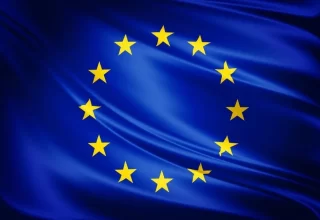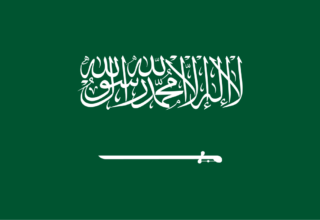
By Mahmoud Refaat: The European Institute for International Law and International Relations.
Contribution: Georgios Mavrodimitrakis, The European Institute for International Law and International Relations.
The ethnically diverse Himalayan region of Jammu and Kashmir continues to be a major source of tension between the regional rivalries, India, Pakistan and to a lesser extent China. Despite the numerous wars and periodical conflicts
that lead thousands to death, the status of the region is still contested until today and New Delhi and Islamabad regularly exchange accusations and bullets over it. In this context, the habitants of the only Muslim-majority region of India live under constant threat for their lives and with little opportunity to ameliorate their living conditions, considered as second class citizens. Why is this conflict so hard to resolute and how does it affect the wider regional antagonism?
A Brief Travel Backwards
The roots of the conflict can be traced back to the 19th century when in 1836 the British “East India Company” signed the “Treaty of Amritsar” offering the Muslim majority Kashmir valley with Ladakh and Jammu as a reward for Raja Ghulab Singh of Jammu helping the British gain the strategically important land (Hashmi & Sajid, 2017). More than a hundred years later, in 1947, under the partition plan provided by the Indian Independence Act after the end of the British colonial rule, the Principe of Kashmir was free to accede to either Pakistan or India. Despite the predominantly Muslim population, the Hindu Maharaja (local ruler) of the region, Hari Singh, initially favored independence but in October of 1947 he decided to join India. Hence a war erupted between India and Pakistan, leading to UN mediation for a ceasefire and to a recommendation by the Security Council to hold a plebiscite for the future status of Kashmir. Nevertheless, neither of the two adversaries agreed to withdraw its troops and the referendum never materialized. On the contrary, the two powers established an unofficial border line, signing the Karachi agreement of 1949 and divided the region between them (Javed, 2020). India would also fight China over the control of the Aksai Chin basin and would go to war once again with Pakistan in 1965 with thousands of casualties on both sides (BBC, 2019). After another Indo-Pakistan war in 1972, which led to the independence of East Pakistan (nowadays Bangladesh), the two countries signed the Simla agreement which turned the Kashmir ceasefire line into the Line of Control (LoC) and promoted the peaceful resolution of the Kashmir issue. However, the situation got even worse in the late 1980s when Kashmiris supported the Jammu and Kashmir Liberation Front (JKLF) and came into direct conflict with the Indian army, leading to thousands of deaths and to a more authoritarian Indian rule over the region. In the aftermath of the insurgency, the two adversaries fought another brief war in 1999 over the district of Kargil in Kashmir from which India came up victorious. Even though the situation remained tense after the dawn of the new millennia, in 2003 the powers agreed on a ceasefire, Pakistan agreed to stop funding insurgents in the territory and in 2008 the two countries opened trade route across the LoC for the first time in six decades, reviving hopes for a gradual de-escalation of the conflict (BBC, 2019).
The Modi Era and Hindu Nationalism
The current Prime Minister of India and leader of the nationalistic Bharatiya Janata Party (BJP) had called for a hard stance on Pakistan already from 2014, when he was first elected. In 2016, after the assassination of an Indian military commander in Kashmir, New Delhi imposed a strict curfew, arrested thousands of Kashmiris with the allegation of insurgency and more than 60 people died from clashes that followed (BBC, 2019). The situation escalated further after the second victory of Modi in May 2019, when he revoked Kashmir’s autonomy that was guaranteed by the Indian constitution (Articles 370 and 35A) and launched a purge against the local insurgencies (Javed, 2020). Seven million Kashmiris were forced once again into lockdown, 10.000 protesters and local leaders were arrested and put into prison, many among them remain imprisoned until today and telecommunication as well as access to internet went dead (Roy, 2020). In October of the same year Amnesty International was forced to shut down operations in India, preventing it from reporting on human rights violations suffered by Kashmiris and other minorities in general since Modi came into power (Tisdall, 2020). Furthermore, in December of 2019 the government passed the Citizenship Amendment Act (CAA), a clearly anti- Muslim law that made nearly impossible for Muslim to acquire or even to maintain their Indian citizenship (Roy, 2020).
Today, the people of Kashmir remain under lockdown which has been stricter since the Covid-19 pandemic. Internet and communication services are still limited and there are numerous reports of torture, disappearances and extensive human rights violations (CFR, 2021; Deutsche Welle, 2021). At the moment India has stationed more than half a million troops in the area and the crackdown against civilians has increased manifold after the revocation of its autonomy (Javed, 2020). What is more according to Waheed (2020): “India is reprogramming the economic and social life of Kashmiris by amending domicile laws” trying at the same time to weaken the Muslim majority by supporting Indian businesses and land purchases in the area, inflating even more the discontent of the local population.
The New Palestine?
The never-ending conflict and the authoritarian rule of New Delhi over the area have led many to claim that Kashmir would be the “new Palestine” (Tisdall, 2020). Indeed the situation is so complex because as Shaheen Showkat Dar (Bhat, 2019, p. 78) claims:
“The Indians are viewing Pakistanis as ‘Muslims’, ‘raiders’, ‘terrorists’, ‘anti-Indian’, ‘lifelong enemies’, and Kashmir as an ‘integral part’ of India. The situation in Pakistan is a mirror-image response. They see Indians as, ‘non-Muslims (Kafirs)’, ‘occupiers’, ‘imperialists’, ‘anti-Muslim’, ‘eternal enemies’, and Kashmir as a ‘jugular vein’ of Pakistan. The unresolved Kashmir conflict has created hostile attitude. 65% of Indians have an adverse opinion about Pakistan and consider it the greatest threat to their country. Likewise, 75% of Pakistanis consider India more serious threat than Al-Qaeda and Taliban”.
Adding to this, the widespread anger against New Delhi in Kashmir is also aggravated by high unemployment, constant human rights violations by the authorities and the low-intensity war between the armies of Pakistan and India that is still raging at the LoC (Javed, 2020; BBC, 2019). Finally the presence of extremist Islamic groups in the area, such as Jaish-e-Mohammad and Lashkar-e-Taiba, backed by Pakistan also contribute to the continuation of the conflict (Bhat, 2019).
Henceforth, even if it is impossible for the two powers to retreat their claims over Kashmir, there are ways to prevent the situation from escalating to an open conflict like the Palestinian struggle. Firstly it is clear that India would not allow for a referendum as it could lead to the independence of the resource rich region (The Kashmiri rivers are the main source of clean water for Pakistan and India to some extend). Ergo, the rapprochement of New Delhi and Islamabad would be of primordial importance to deescalate and ameliorate the situation on the ground. For this to be achieved India must withdraw some of its troops and respect the autonomy of the region and Pakistan has to stop supporting Islamic insurgents in the area.
On a second level the United Nations should monitor and report on the situation on the ground while advising the central government on how to upgrade the living conditions of the local population and prevent further human rights abuses and phenomena of administrative failure and corruption that exacerbate tensions. In this context human rights NGOs should also be allowed to assist the work of the UN and assure the implementation of the rule of law.
To conclude, Kashmir is in chaos for at least the last seven decades and the dynamics of the region have led the conflict to become a self-fulfilling prophecy. Therefore the international community should take measures to restrain the atrocities committed by the Indian government and promote Indo-Pakistani dialogue to guarantee peace and prosperity for the wider region and prevent a humanitarian catastrophe of mass scale.
References
Bhat, S. A. 2019. The Kashmir conflict and human rights. Race & Class. 61(1):77-86
Conflict Between India and Pakistan. 2021 May 21. Council on Foreign Relations. Retrieved in 2021, May 20 from https://www.cfr.org/global-conflict-tracker/conflict/conflict-between-india-and-pakistan
Hashmi, R. S., and Sajid, A. 2017. Kashmir Conflict: The Nationalistic Perspective (A Pre-Partition Phenomenon). Journal of South Asian Studies. Vol. 32, No. 1. pp.219 – 233
Javed, M. 2019. Mapping of Kashmir conflict under nugget model. Margalla Papers. Issue II
Kashmir territories profile. 2019 August 6. BBC. Retrieved in 2021, May 20 from https://www.bbc.com/news/world-south-asia-11693674
Kashmir: Why India and Pakistan fight over it. 2019 August 8. BBC. Retrieved in 2021, May 20 from https://www.bbc.com/news/10537286
Roy, A. 2020 August 5. Modi’s brutal treatment of Kashmir exposes his tactics – and their flaws. The Guardian. Retrieved in 2021, May 20 from https://www.theguardian.com/commentisfree/2020/aug/05/modi-brutal-treatment-of-kashmir-exposes-his-tactics-and-their-flaws
Tisdall, S. 2020 October 4. Amnesty specialises in hard truths. No wonder Modi froze it out of India. The Guardian. Retrieved in 2021, May 20 from https://www.theguardian.com/commentisfree/2020/oct/04/amnesty-specialises-in-hard-truths-no-wonder-modi-froze-it-out-of-india
Waheed, M. 2020 August 5. A year on from a devastating siege, Kashmir is being turned into a colony. The Guardian. Retrieved in 2021, May 20 from https://www.theguardian.com/commentisfree/2020/aug/05/devastating-siege-kashmir-colony-india-crushing-dissent
What is the EU’s stand on the Kashmir conflict? 2021 February 19. Deutsche Welle. Retrieved in 2021, May 20 from https://www.dw.com/en/what-is-the-eus-stand-on-the-kashmir-conflict/a-56629526














